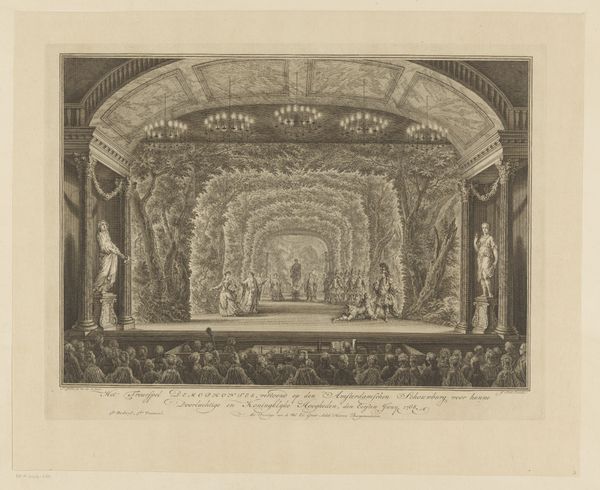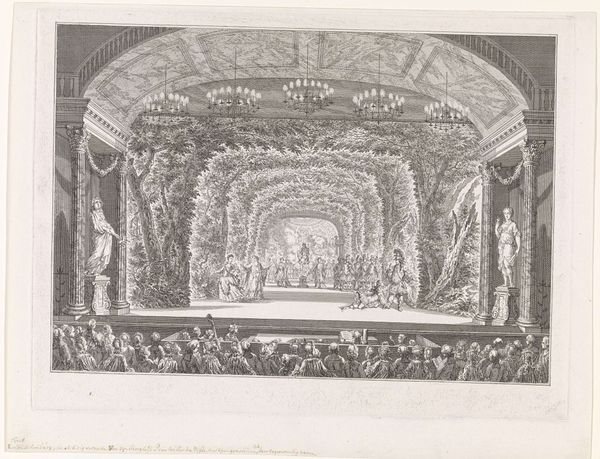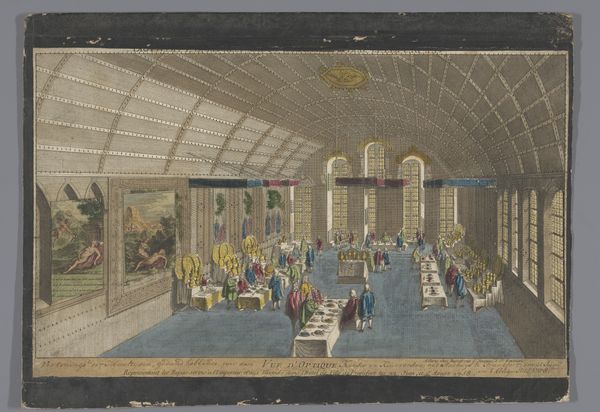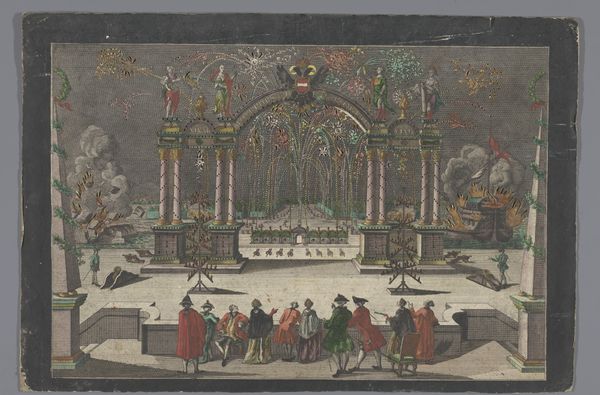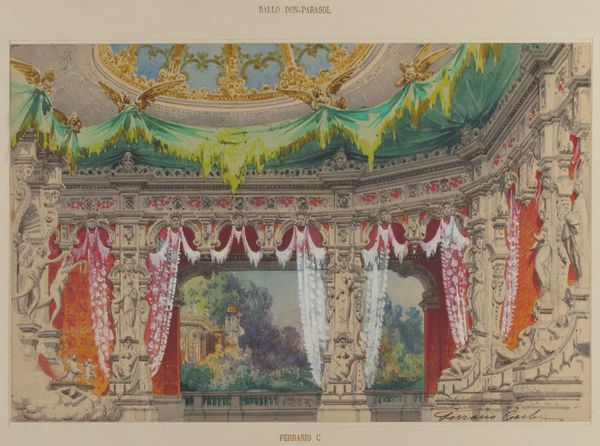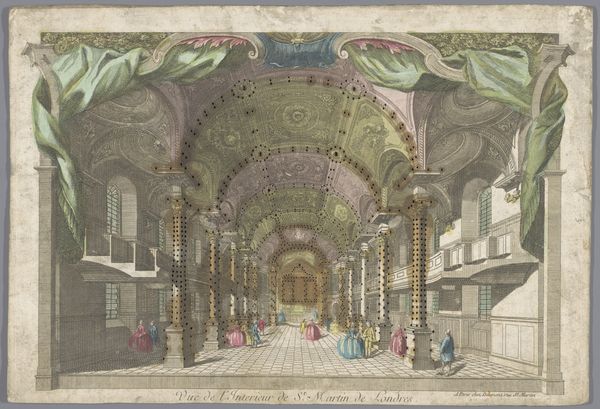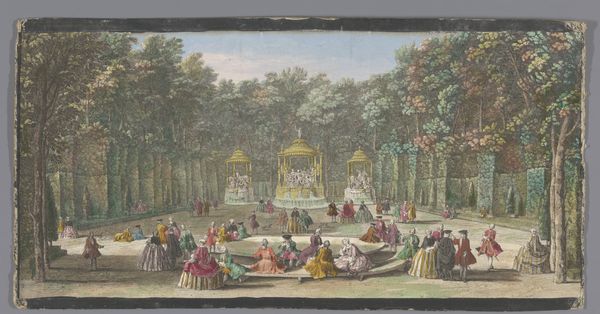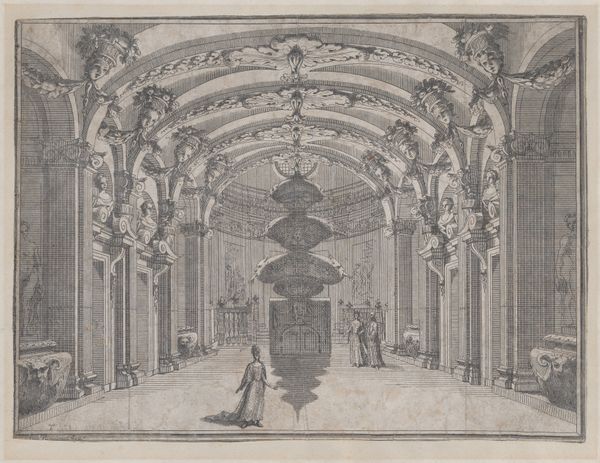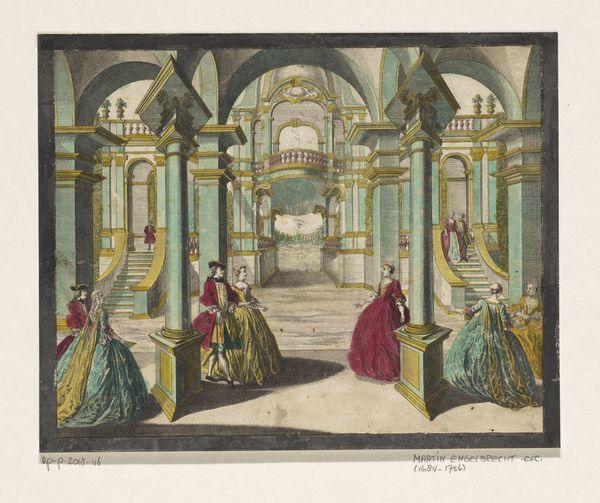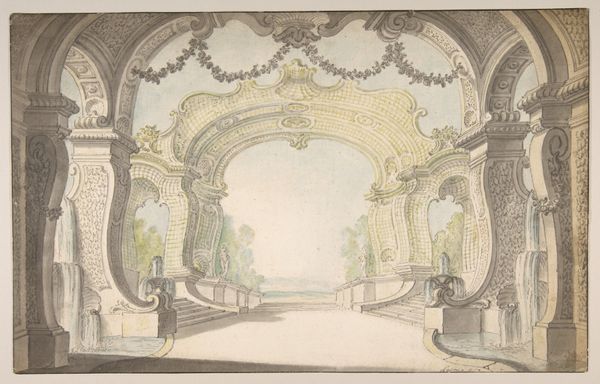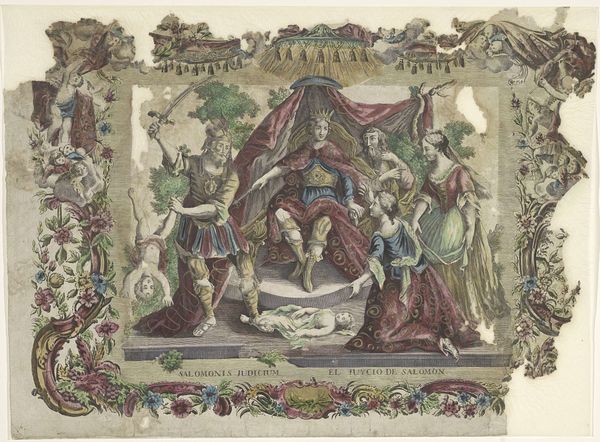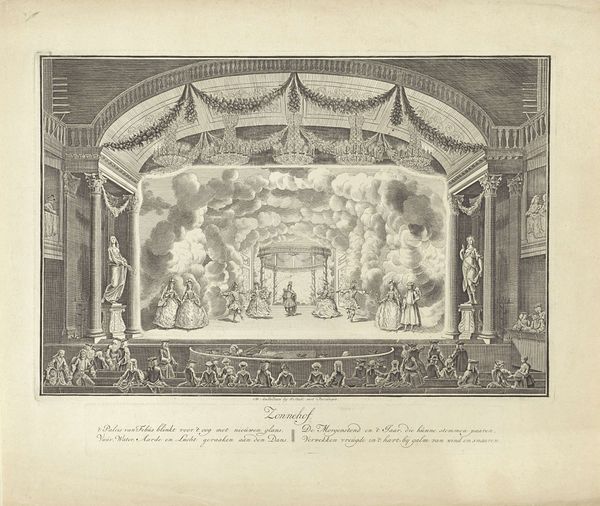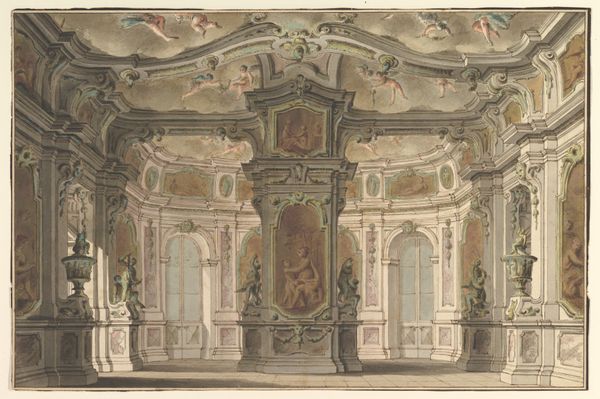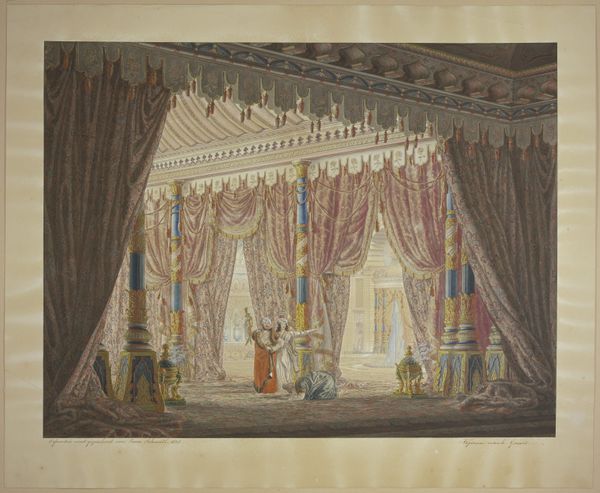
Gezicht op het podium van de Schouwburg te Amsterdam met een voorstelling voor Willem V en Wilhelmina van Pruisen op 1 juni 1768 1768 - 1799
0:00
0:00
Dimensions: height 308 mm, width 452 mm
Copyright: Rijks Museum: Open Domain
Editor: Here we have a watercolor and ink work titled "Gezicht op het podium van de Schouwburg te Amsterdam met een voorstelling voor Willem V en Wilhelmina van Pruisen op 1 juni 1768," made sometime between 1768 and 1799 by an anonymous artist. The piece depicts an audience watching a theatrical performance. What immediately strikes me is the clear distinction between the wealthy elite in the audience and the romanticized, almost pastoral scene being played out on stage. What social commentary do you see here? Curator: That's a keen observation. This work functions on several levels. First, it's a record of a specific historical moment, a performance for powerful figures. But more deeply, it's a visual representation of the power dynamics inherent in theatre, and indeed, in art patronage more broadly. Consider the performance itself: often, such spectacles presented idealized narratives that reinforced the existing social order. How might the themes explored in that staged garden, that artificial paradise, contrast with the realities faced by the majority of the population at the time? Editor: So, the artifice on stage is not just for show, but serves to reinforce existing power structures? Curator: Exactly. It presents a carefully constructed world, designed to be consumed and enjoyed by those who hold power. The act of viewing, the separation between spectator and spectacle, becomes a microcosm of broader societal inequalities. Ask yourself: Whose stories are being told, and for whom? The very act of memorializing this event in watercolor perpetuates that dynamic. Do you think this work unwittingly critiques or consciously celebrates it? Editor: I hadn't considered it that way. I think there's an uncomfortable tension – perhaps it captures both celebration and an implicit, unintended critique, just by presenting the scene so starkly. Thank you, this gives me a lot to think about! Curator: My pleasure. It's in recognizing these tensions that we can begin to unpack the complex relationships between art, power, and social reality.
Comments
No comments
Be the first to comment and join the conversation on the ultimate creative platform.
